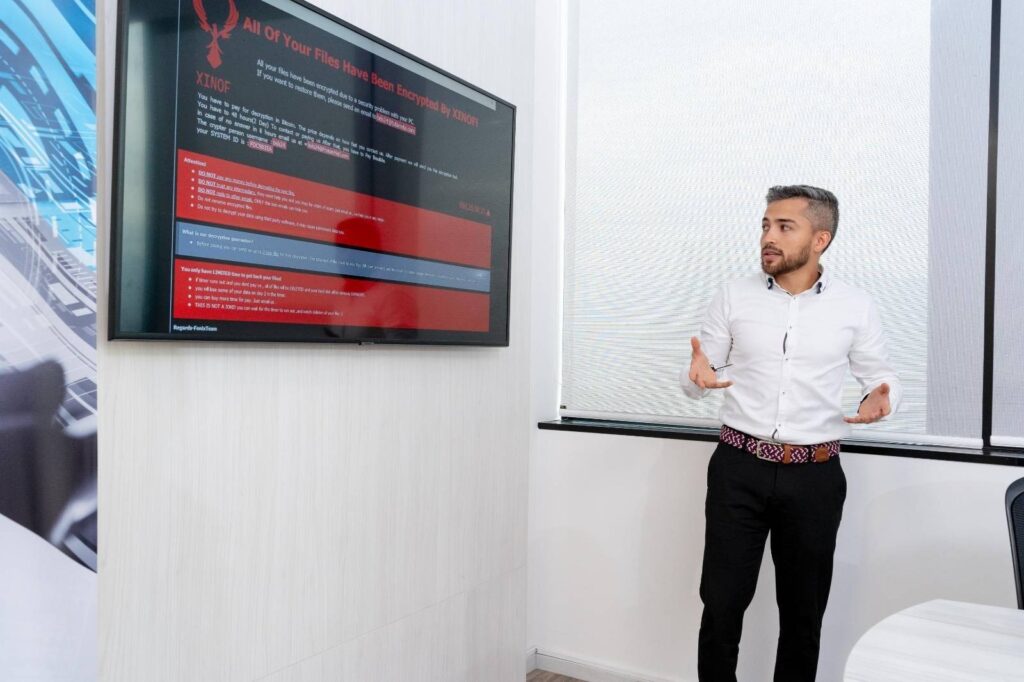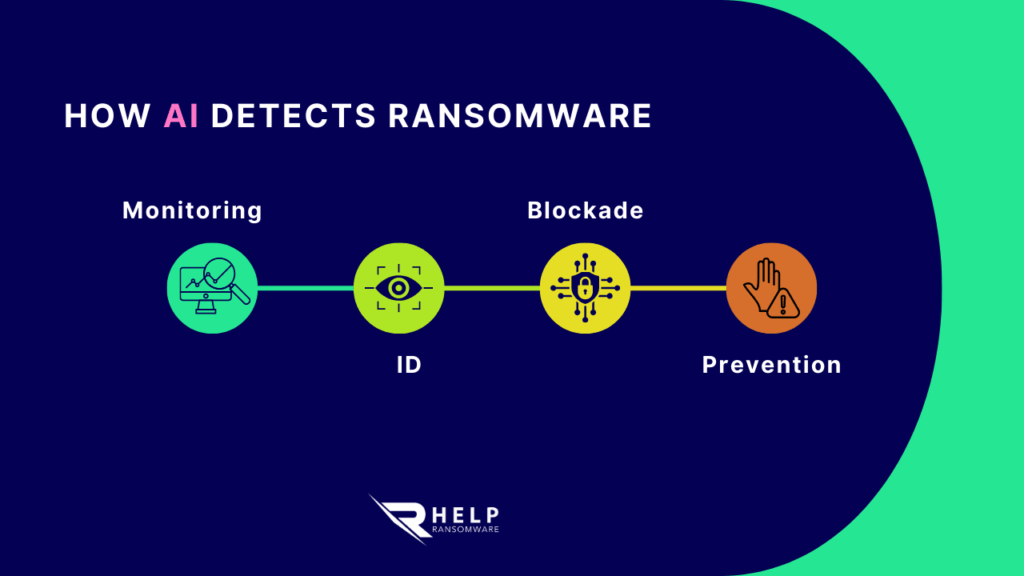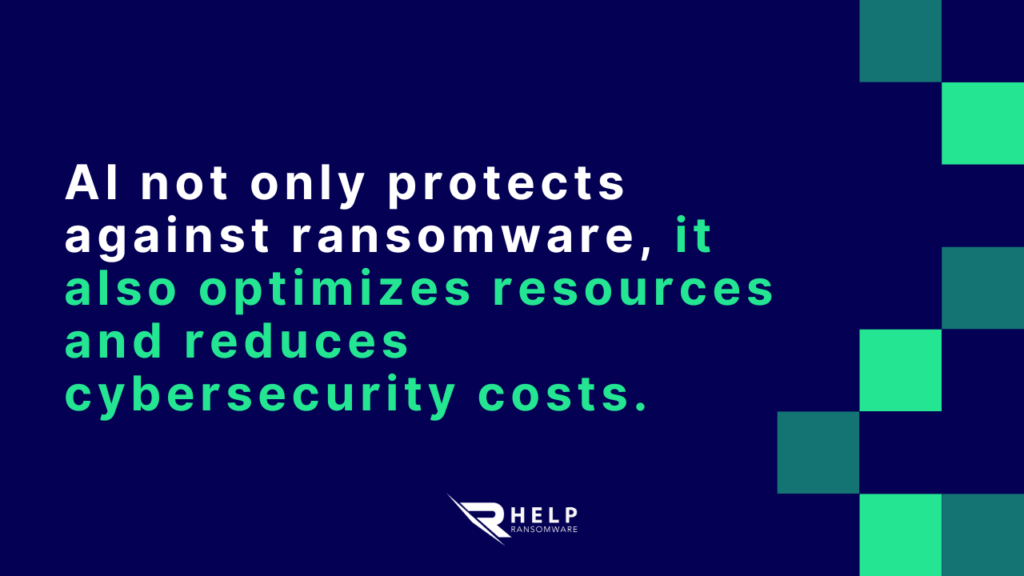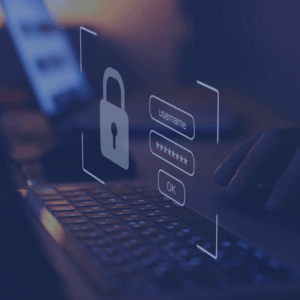Ransomware is one of the biggest challenges facing businesses and institutions today. These attacks not only block access to information but also jeopardize business continuity and corporate reputation.
Given this scenario, artificial intelligence (AI) has become an essential tool for strengthening defenses against ransomware, enabling us to anticipate threats, react quickly, and minimize the impact of incidents.

AI as an ally in cybersecurity
Unlike traditional solutions, AI doesn’t just react when an attack is already underway, but analyzes activity patterns in real time to detect anomalies. This predictive capability is key to identifying attempted attacks types of ransomware even before file encryption begins.
According to the Cybersecurity and Infrastructure Security Agency (CISA), AI systems applied to security significantly reduce the average time to detect incidents, which reduces the costs and damage resulting from an attack.

Immediate Ransomware Help
Don’t let ransomware hold your business hostage. Our experts are ready to recover your data and secure your systems.
Real AI-based strategies against ransomware
Early detection of anomalies
Machine learning models learn from normal network behavior. When they detect suspicious actions, such as unauthorized access or unusual data transfers, they trigger an alert and block the process.

Automated incident response
In the event of a confirmed infection, AI can isolate the affected system from the network, limiting the spread of malware. This automated action reduces cybercriminals’ chances of success and allows security teams to respond to a more controlled incident.
Predicting future attacks
By analyzing global data, AI helps us stay ahead of new variants. It identifies trends in the most vulnerable sectors and strengthens security in critical environments, such as healthcare and transportation.

Immediate Ransomware Help
Don’t let ransomware hold your business hostage. Our experts are ready to recover your data and secure your systems.
Benefits of AI in the fight against ransomware
The application of artificial intelligence offers notable advantages:
- Speed of response : an automated system acts in seconds.
- Greater accuracy : false positives that consume human resources are reduced.
- Scalability : Protect large environments without the need for additional staff.
- Learning capacity : with each attack attempt, the system improves.

Risks and limitations of AI in cybersecurity
However, relying solely on AI can also create new vulnerabilities:
- Cybercriminals also use AI to refine phishing campaigns, evade defenses, and even clone voices for extortion.
- Technology dependence: Without a human backup plan, a system failure could leave the organization exposed.
- Privacy issues: Training models requires large volumes of data, which must be protected to prevent leaks.
This is where the need to combine AI with classic measures such as ransomware protection, encryption of sensitive information, and an active backup policy comes into play.
Conclusion: AI and human factor, the necessary combination
Artificial intelligence represents a qualitative leap in the fight against ransomware, but its maximum effectiveness is achieved when integrated with human oversight and established prevention strategies.
In this sense, a solid defense must include employee training, incident recovery plans, and the support of experts specializing in ransomware and cybersecurity law, along with the use of advanced AI technologies.
The future of cybersecurity will depend on this balanced collaboration: intelligent algorithms combined with human expertise. Only then will it be possible to minimize risks and keep critical information safe.



